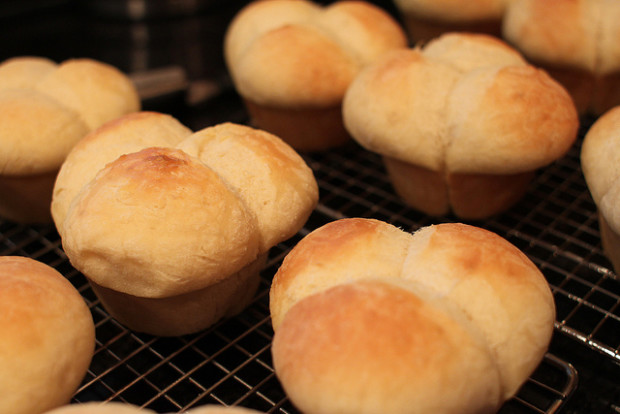You have no items in your cart. Want to get some nice things?
Go shopping
Come, bombs and blow to smithereens
Those air-conditioned, bright canteens,
Tinned fruit, tinned meat, tinned milk, tinned beans,
Tinned minds, tinned breath.
– John Betjeman, Slough
Awakening to the semi-darkness of cold, cobalt skies I dread the sound of shattering of glass. It hasn’t happened yet, but I know that it’s a risk if they get over-excited. Since the end of the harvest season, I have handed over my kitchen to other, more powerful forces. I can’t see them, but I know that they’re there. I can hear them burp, gurgle, and hiss at each other at intervals during the night. They make my wine, prove my bread, preserve my vegetables, and carbonate my soda. They make an excellent digestif, and might even improve my serotonin uptake [1][2]. Who could ask for better friends?
My love of fermentation started a few years ago with the creation of my sourdough starter, Lazarus. A collection of yeasts and lactobacili, Lazarus came forth from flour, water, and lots of stirring. Despite periods of intermittent neglect and the subsequent resurrections that led to his naming, Lazarus has assisted me in the production of an endless array of delicious loaves, pancakes, doughs, and crumpets. Over time he has matured and become more sophisticated, and in turn, I have saved a lot of money on tasty, nutritious bread.
Few things can be more distinct to their environments than fermented foods. From the grey bloom on sloes in a Cumbrian hedgerow, to the much-coveted tang of San Franciscan sourdough, every place has its own collection of wild yeasts and bacteria that combine to bestow unique flavours upon fermented foods. Sourdough bread made in Lambeth will be different to its Lancastrian counterpart even if the same recipe is followed, and that is the great joy of it. Common Ground, a charity dedicated to the preservation of local distinctiveness, describes this phenomenon as “history and nature jostling with each other, layers and fragments, old and new”[3] – which goes far to explain why so many local treasures go overlooked and are threatened with extinction today.
In his 1972 work Ways of Seeing, John Berger reflects that “fear of the present leads to a mystification of the past”, resulting in an experience of art that is “unnecessarily remote”[4]. This act of mystification, Berger argues, benefits “a ruling minority [that] is striving to invent a history which can retrospectively justify the role of the ruling classes”[5]. This act can be physical, as in the removal of art from public spaces, or metaphysical, as when art is caged in vague terms such as “Genius”, “Form”, “Taste” and “Beauty”[6]. The same has happened with our experience of food. Almost all processes involved in food production, from growing and cultivating it, to preparing and cooking it, have been removed from our daily experience. Simple processes, once at the heart of all communities, if not all homes, have been rendered completely alien to us. Supposedly this has happened in the name of convenience, though whose is not always clear.
Knowledge of food, once acquired through the multisensory experience of local creative commons (local produce; family recipes) has been removed to the private sphere: the world of cookbooks, television shows, and conspicuous consumption (kitchenalia; niche produce). The publicity surrounding this commodification “[is] situated in a future continually deferred, excludes the present and so eliminates all becoming, all development”[7]. As such, this relationship with our food leaves us stuck in a constant state of infancy: dependent, helpless, and ever in search of food that is “silky, smooth, unctuous, creamy or tender”[8]. Ramona Andrews notes this trend in her wonderful article Food texture’s forgotten pleasures: “Industrialised, processed food is often marketed as soft and creamy in the UK, with adverts for such foods playing on the sensual and comfort associations that have set in from a young age”[9]. This trend is particularly visible on meat counters, where skinless, boneless, and fatless (not to mention flavourless) produce is sold cheaply to people unable to reconcile what they eat with the slaughter it entails.
But this state of infancy goes beyond our food being puréed for us. The language of health and safety, whilst promising protection from legitimate fears of contamination and poisoning that were rife during the lifetime of Mrs Beeton [10], also makes us fearful of the most basic of culinary processes. Even misshapen vegetables (or apples growing on trees!) are regarded with suspicion, let alone anything that might happen to contain bacteria or be raw (unless it is packaged and labelled as “probiotic”, or sold in a restaurant). Decades of advertising for, and the use of, cleaning products that demonise and exterminate bacteria has rendered swathes of us paranoid, allergy-laden mysophobes with compromised immune systems, whilst offering no proven benefit to otherwise healthy households [11][12][13]. Unable to identify the sights and smells of quality produce for ourselves, we depend on the market to do it for us – which can lead to a number of absurdities: from the waste of perfectly edible food, to the over-zealous control of certain products, despite being safe when they are produced to exacting standards (and shouldn’t all food be?).
Recently, I asked people about how the Internet has changed their experience of food. Some said that it had removed some of the magic from it, as it is now possible to understand how most foods are made within a few clicks. However, I would contend that this is a mirage, and part of the process of mystification – a process cleverly shrouded in reassurance of proximity. That is, while information appears to be readily available, its value is often (and sometimes overtly) like that of pornography. It simulates the real, perhaps even titillates (#foodporn), but can lack in substance and authenticity, often caged in, or surrounded by, the language of acquisition (“buy online”, “subscribe”, “free with your next purchase”). Much in the way of milk, it seems that our relationship with food is changing in such a way that “all hopes are gathered together, made homogeneous, simplified, so that they become the intense yet vague, magical yet repeatable promise offered in every purchase”[14]. Nowhere is this better embodied than in “recipe boxes”, where exorbitant prices are charged for exactly-measured produce so that one can simulate the idea of cooking without any of the thought processes behind it, all the while amassing identity tags relating to eating “healthy” or “organic” food.
We need to reaffirm our relationship with our food, and to realign it with community, creativity, and culture. To fail to do so is almost to assume the position of a battery animal: to be blind to the world, cut off from one’s own history, and to be accepting of grey pellet feed for want of knowing any better. No, you have eaten hay long enough [15].
Perhaps the “sharing economy”, through platforms such as VizEat in conjunction with the indefatigable work of charities like SlowFood, will help to counter this trend by encouraging us to strive for what is local and personal. In the meantime, please: forage, ferment, and be fascinated.
[1] Biological Sciences – Neuroscience: Javier A. Bravo, et al.: Ingestion of Lactobacillus strain regulates emotional behavior and central GABA receptor expression in a mouse via the vagus nerve 2011 108 (38) 16050-16055; published ahead of print August 29, 2011, doi:10.1073/pnas.1102999108
[2] Liang, S., et al., Administration of Lactobacillus helveticus NS8 improves behavioral, cognitive, and biochemical aberrations caused by chronic restraint stress. Neuroscience 310 (2015), pp. 561-577.
[3] Commonground.org.uk,. ‘Local Distinctiveness | Common Ground’. N.p., 2015. Web. Nov 1. 2015.
[4] Berger, John. Ways Of Seeing. London: British Broadcasting Corp. and Penguin (1973). Print, p.4.
[5] Ibid.
[6] Ibid.
[7] Berger, John. Ways Of Seeing. London: British Broadcasting Corp. and Penguin (1973). Print, p.147.
[8] Andrews, Ramona, ‘Chew On This: Forgotten Food Texture’. BBC Food. N.p., 2013. Web. Nov 6. 2015.
[9] Ibid.
[10] Beeton, Isabella. Mrs. Beeton’s All-About Cookery. London: Ward, Lock, 1923. Print, p.65.
[11] McFadden, J.P., Thyssen, J.P., Basketter, D.A., Puangpet, P. and Kimber, I. (2015), T helper cell 2 immune skewing in pregnancy/early life: chemical exposure and the development of atopic disease and allergy. British Journal of Dermatology, 172: 584–591. doi: 10.1111/bjd.13497.
[12] Levy, S.B. Antibacterial household products: cause for concern. Emerging Infectious Diseases. 2001;7(3 Suppl), pp. 512-515.
[13] Ibid.
[14] Berger, John. Ways Of Seeing. London: British Broadcasting Corp. and Penguin (1973). Print, p.147.
[15] Thoreau, Henry David, ‘Walking’, in Thoreau, The Essays of Henry David Thoreau. Lanham, MD: Rowman & Littlefield (1992), p.138.

About Concepta Cassar
Concepta is a journalist, forager and food writer, with a particular interest in food anthropology, sustainability, and agricultural affairs. Her recipes have been featured in the Guardian, and she writes for a number of organisations, including BuzzFeed, Aftertastes, and the Soil Association. Her other great loves are literature and modern languages. Concepta speaks French and Italian, and has a working knowledge of Spanish and Russian.





The article you have shared is really nice and include all informative information and one can have healthy food for living fit and healthy. Be continue with the nice articles.